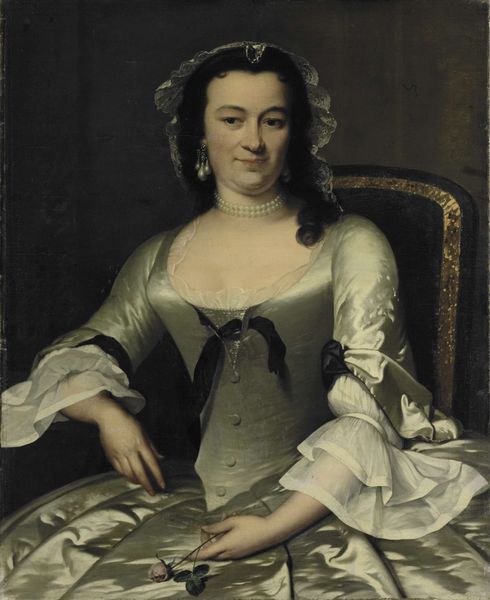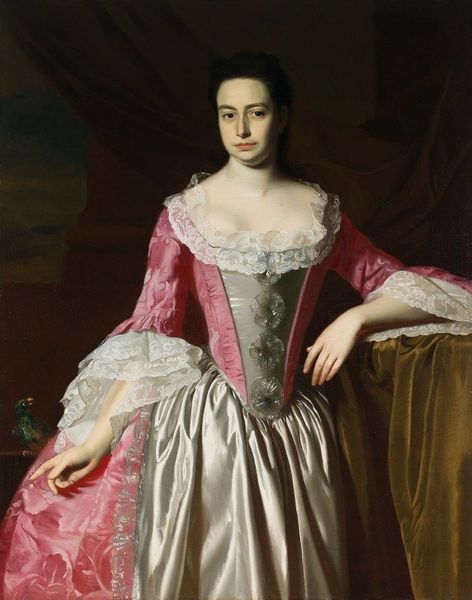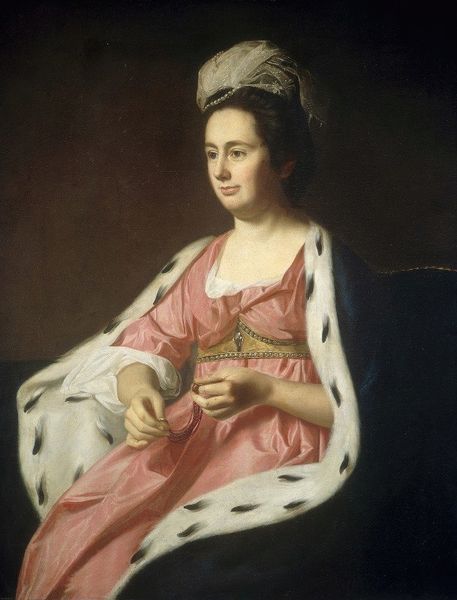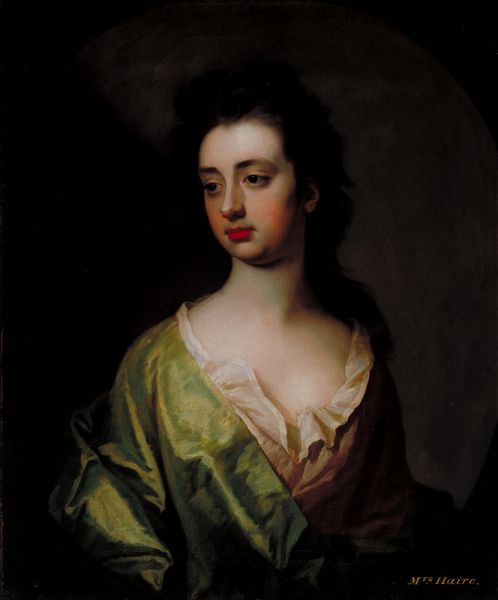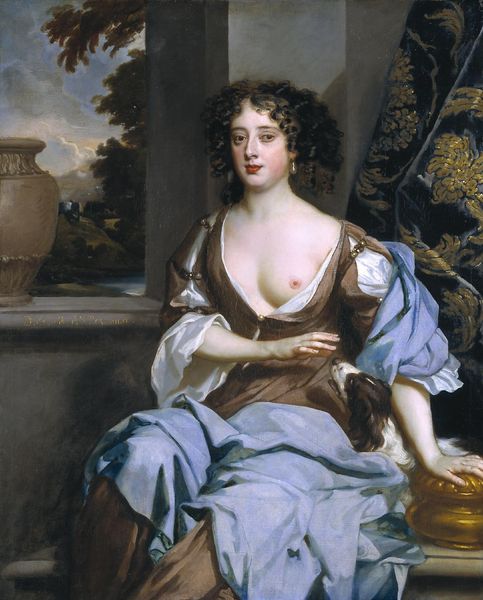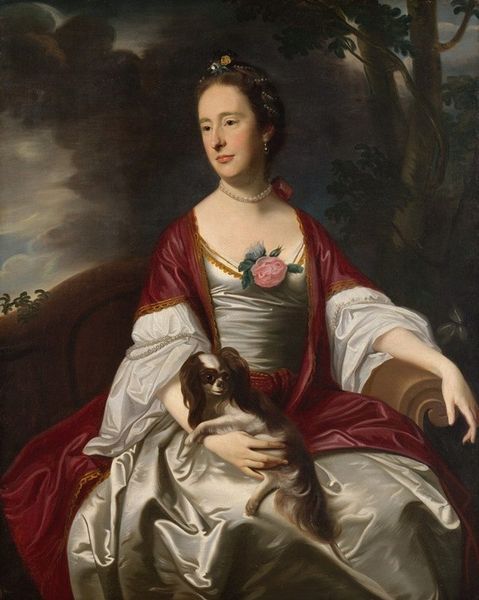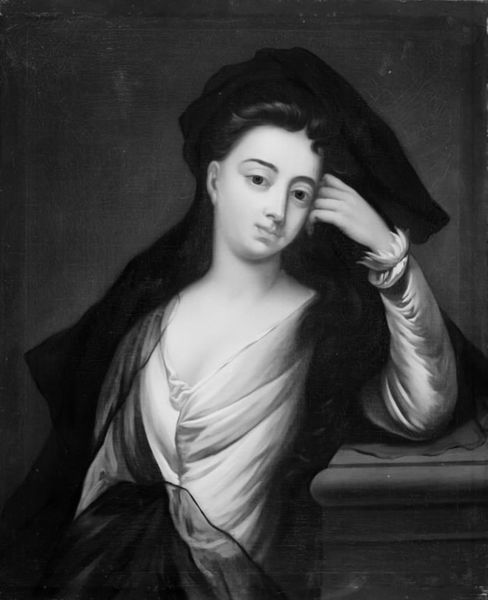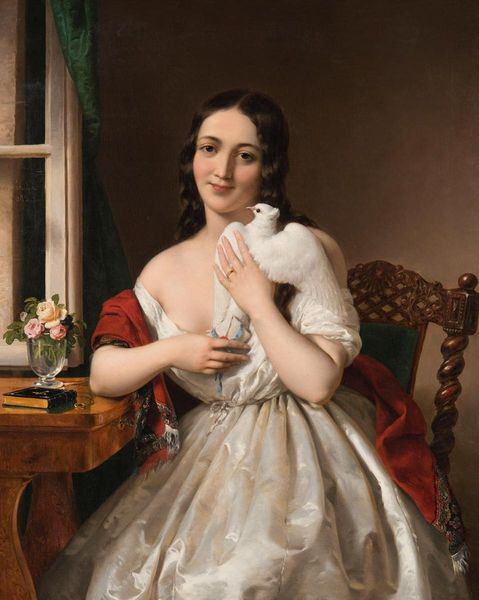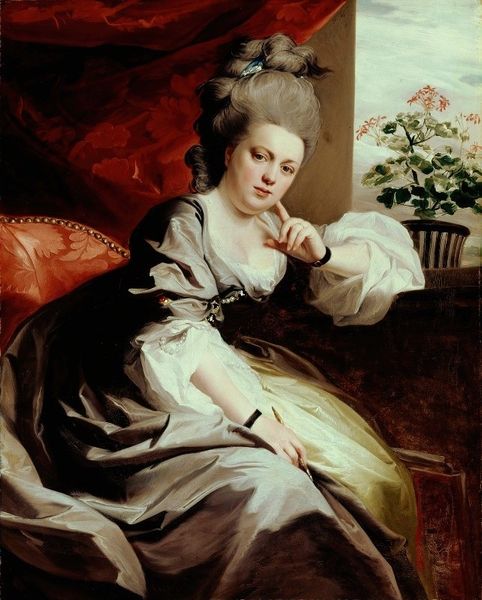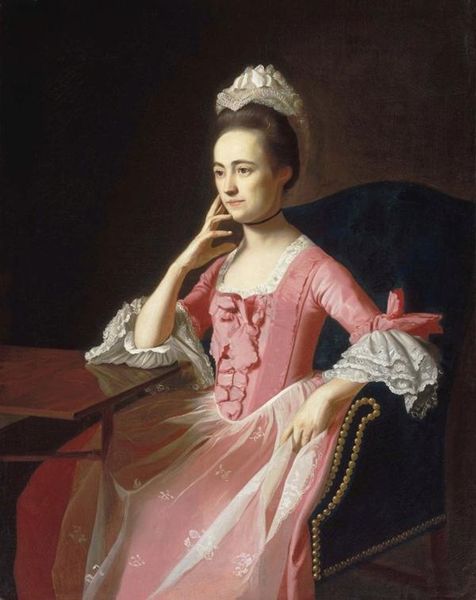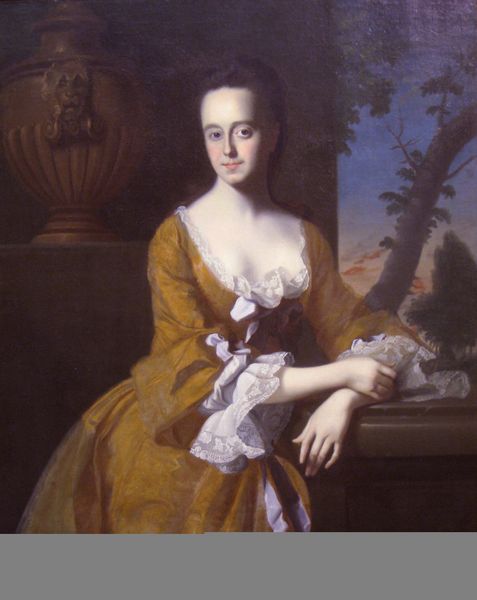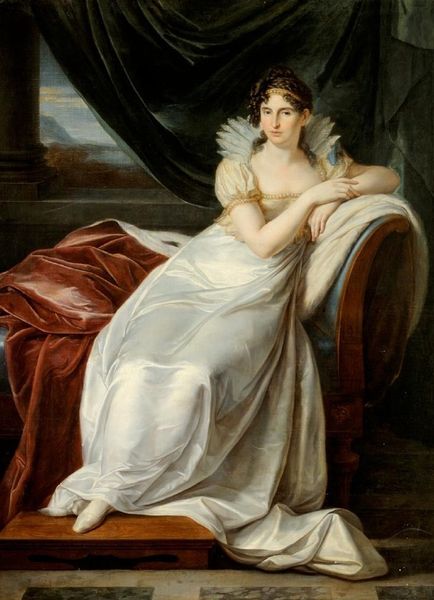
oil-paint
#
portrait
#
figurative
#
oil-paint
#
figuration
#
romanticism
#
academic-art
Copyright: Public Domain: Artvee
Curator: Welcome. Today, we're looking at a work attributed to John Singleton Copley titled, simply, "Portrait of a Lady." The medium is oil on canvas, typical for portraits of the time. Editor: Immediately striking is the tactile quality, the sheen of that satin dress. You can almost hear it rustling! And look at the damask on the couch; Copley clearly wants to convey wealth and status through materials. Curator: Indeed. Notice how Copley employs symbols to deepen the visual narrative. Her composed posture, the carefully arranged fabric… she is deliberately presenting herself as a figure of refinement and self-possession. What does that open letter in her hand suggest? Editor: Perhaps she's in control of her narrative; maybe this portrait is meant to cement the image she wants the world to see. Speaking of production, think about the layers of labor involved. Fabric production, dressmaking, not to mention Copley's meticulous brushstrokes to render it all believably. Curator: Absolutely. There’s an almost devotional quality to the detail. It mirrors the societal values attached to this representation. But what does the woman's somewhat ambiguous gaze say about the burdens or limitations of such an elevated social position? It's interesting to note this could have been commissioned or a personal gesture—either speaks to how image solidifies the identity she wishes to be seen by, and see herself as. Editor: Yes, exactly! And even though it may be oil paint on canvas, these materials stand for much more in her societal context. In the context of early America, portraying someone in such sumptuous clothing reflects colonial dependence on trade and consumption, but her gaze is certainly at odds with an entirely obedient submission to class power. Curator: Her ambiguous look does add a layer of questioning that resonates powerfully even today. The open letter; the reflective light of her dress...it is all strategically placed and lit to reflect the symbolism she’s consciously chosen. Editor: Well, whatever statement she’s making, it's inextricably bound up in the material conditions that allow her to make it in the first place. That intersection of personal statement and economic context is, for me, what gives the work lasting resonance. Curator: Ultimately, this piece provides a nuanced commentary on both the constructed self and the social structures shaping identities. Editor: Indeed. It makes us contemplate the tangible stuff behind representation and presentation.
Comments
No comments
Be the first to comment and join the conversation on the ultimate creative platform.

